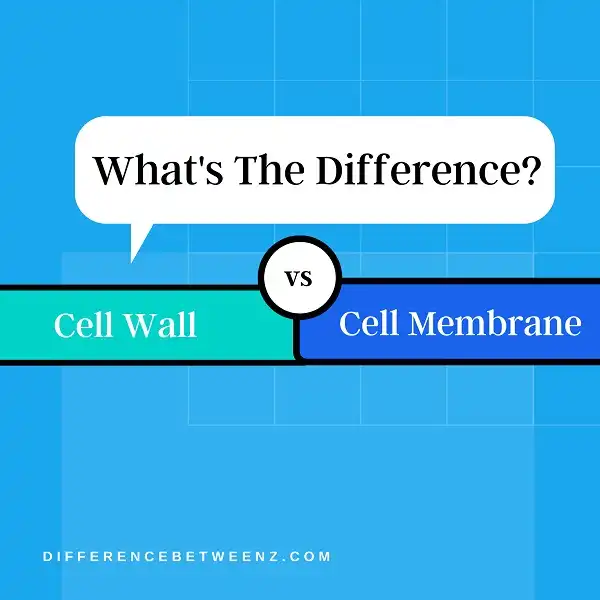Cell Wall vs. Cell Membrane
What is the Difference Between Cell Wall and Cell Membrane? The plasma membrane and the cell wall are two integral parts of the cells.
The cell is the smallest structural and functional unit that living beings possess and are microscopic, meaning that it cannot be seen with the naked eye.
They were discovered in 1665 by Robert Hooke, who decided to name them “cells” (a word derived from the Latin cellular, cells).
Difference between Cell Wall and Cell Membrane
There are two types of cells, prokaryotes, and eukaryotes.
The former are self-sufficient and some examples of them are bacteria and archaic.
On the other hand, the cells of all multicellular beings are eukaryotic cells.
Both animals and plants have eukaryotic cells, although they have different structures; among which two are of great importance: the plasma membrane and the cell wall.
Cell Membrane
The cell or plasma membrane is essentially a barrier that separates the inside of the cells from the outside environment. T is also known as a cell membrane.
It is present in all classes of cells, including plants and animals. The main function of this membrane is to regulate what enters and leaves the cell.
It also gives shape and ensures that the parts of the same do not come out.
The cell membrane consists of a thin layer of amphipathic phospholipids.
It consists of lipid bilayers, which are basically two layers of lipids; also known as fats.
Is the cell wall a membrane?
These phospholipids are arranged in such a way that they contribute to regulating the entry and exit of water in the cell, which means that the membrane acts as a shield that regulates the water intake.
Phospholipids also contain integrated proteins that allow certain elements such as nutrients to enter and exit the cell, depending on the needs of the cell.
Cellular Wall
The cell wall, on the other hand, is not found in animal cells or protozoa.
The cellular wall is present in plant cells as well as in bacteria, fungi, algae, and some archaea.
It is an integral part of these cells to be as its name suggests a wall.
It’s a hard layer that surrounds the entire cell and can be rigid or flexible depending on the type. The cell wall is outside the cell membrane.
What has no cell wall?
Mycoplasma organism does not have a cell wall and is the smallest living cell.
In plants, it is composed of cellulose; while in bacteria, fungi, algae, and archaea, it consists of peptidoglycan, chitin, glycoproteins, polysaccharides, or pseudopeptidoglucan; depending on the case.
The main purpose of a cell wall is to provide protection and shape to the cell.
D to rigidity to it and allows it to maintain its shape even under pressure, and especially when there is a lack or excess of water in it.
As well as the cell membrane, the cell wall is also responsible for what enters and leaves the cell.
It controls all transfer of substances between the inside and the outside of it. Cell walls have some holes called plasmodesms.
They are responsible for allowing the nutrients to enter the cell, the residues leave and the ions pass through.
Comparison Table
| Cell wall | Cell membrane |
| Present only in plants | Present in all types of cells |
| The most outer layer of the cell of plant cell | The outermost layer of animal cell |
| It is 0.1micrometer to several micrometers. | It is 7.5-10 nanometers. |
| Rigid and Thick | Delicate and Thin |
| Externally Protects cell | Internally Protects cell |
| Metabolically inactive | Metabolically active |
| Grows in thickness | Does not grow |
| Fully permeable | Selectively permeable |


